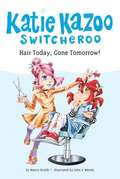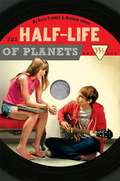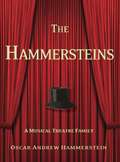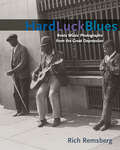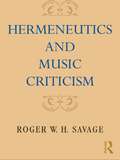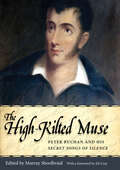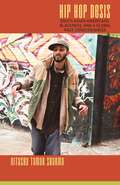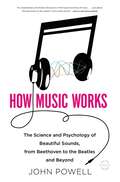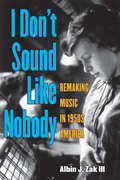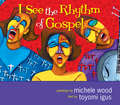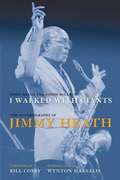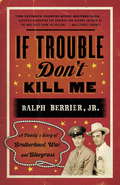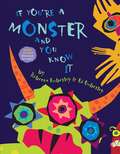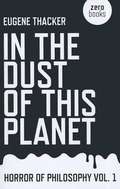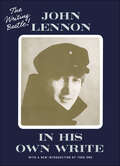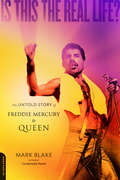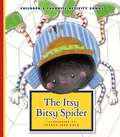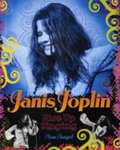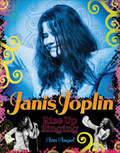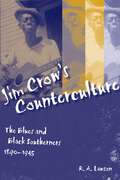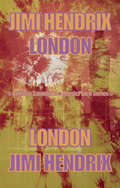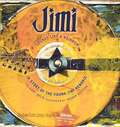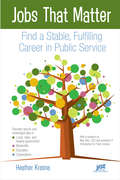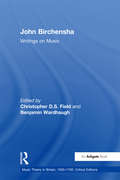- Table View
- List View
Hair Today, Gone Tomorrow! (Katie Kazoo Switcheroo #34)
by Nancy KrulikCan one little wish mess up the life of a nice, ordinary kid? Sure can! Nancy Krulik's funny, popular series begins on a day when nothing goes right for Katie Carew, the kind of day when you wish you could--poof! like magic--be anybody but yourself. Poor Katie soon learns that's when the real trouble starts! Katie is nervous about her upcoming clarinet performance, but Suzanne convinces her that a new haircut is just the thing she needs to wow the audience. And the only place for both girls to go is Cherrydale's newest, most stylish salon. Disaster strikes, however, when Katie is switcherooed into Suzanne's stylist right before her cut. Talk about a hairy situation!
The Half-Life of Planets
by Emily Franklin Brendan HalpinTwo veteran young adult authors tell, in alternating chapters, the story of a quirky romance between a rock-n-roll freak and a girl who can't stop kissing.
Hammersteins: A Musical Theatre Family
by Oscar Andrew HammersteinThe remarkable, unprecedented biography of the Hammersteins, Broadway's greatest and most influential family, as told by Oscar Andrew Hammerstein The Hammersteins is the story of one of Broadway's most creative and productive families. It is a story that begins in 1864 when Oscar Hammerstein I emigrates to America, establishes himself as a successful cigar merchant and turns his attention to the business of music and theaters. He builds many theaters including New York's most majestic opera house. He turns Times Square (then Longacre Square) into the theater capital of the world. His sons, Willie and Arthur carry on the tradition and nurture such talents as Will Rogers, W.C. Fields, Al Jolson, Houdini, and Charlie Chaplin. Willie's son Oscar II becomes the most successful lyricist of all time, writing the story and words to the Broadway shows Showboat, Oklahoma, South Pacific, Carousel, The King and I, and The Sound of Music. The accomplishments of this family are monumental. Their tale is enchanting. Written by Oscar "Andy" Hammerstein (Oscar II's grandson), TheHammersteins presents a multi-layered portrait of the Hammerstein legacy, complete with personal and professional highlights, as well as the scandals and tragedies. The book also draws heavily upon the family archives, presenting a rich collection of photographs, theatre blueprints, letters, programs, patents, and more, much of which has never been seen before. The Hammersteins is at once a deeply personal story of an American family living the American dream and a celebration of musical theater in this country.
Handel (The\baroque Composers Ser.)
by David VickersThis anthology represents scholarly literature devoted to Handel over the last few decades, and contains different kinds of studies of the composer's biography, operatic career, singers, librettists, and his relationship with the music of other composers. Case studies range from recent research that transforms our knowledge of large-scale English works to an interdisciplinary exploration of an individual opera aria. Designed to bring easy and convenient access to students, performers and music lovers, the wide-ranging articles are selected by David Vickers (co-editor of the recent Cambridge Handel Encyclopedia) from diverse sources - not only familiar important journals, but also specialist yearbooks, festschrifts, not easily accessible newsletters, conference proceedings and exhibition catalogues. Many of these represent an up-to-date understanding of modern Handel studies, deal with fascinating biographical issues (such as the composer's art collection, his chronic health problems, and the nature of popular anecdotal evidence), and fill gaps in the mainstream Handelian literature.
Hard Luck Blues: Roots Music Photographs from the Great Depression (Music in American Life)
by Rich RemsbergShowcasing American music and music making during the Great Depression, Hard Luck Blues presents more than two hundred photographs created by the New Deal's Farm Security Administration photography program. With an appreciation for the amateur and the local, FSA photographers depicted a range of musicians sharing the regular music of everyday life, from informal songs in migrant work camps, farmers' homes, barn dances, and on street corners to organized performances at church revivals, dance halls, and community festivals. Captured across the nation from the northeast to the southwest, the images document the last generation of musicians who learned to play without the influence of recorded sound, as well as some of the pioneers of Chicago's R & B scene and the first years of amplified instruments. The best visual representation of American roots music performance during the Depression era, Hard Luck Blues features photographs by Jack Delano, Dorothea Lange, Russell Lee, Arthur Rothstein, Ben Shahn, Marion Post Wolcott, and others. Photographer and image researcher Rich Remsberg breathes life into the images by providing contextual details about the persons and events captured, in some cases drawing on interviews with the photographers' subjects. Also included are a foreword by author Nicholas Dawidoff and an afterword by music historian Henry Sapoznik. Published in association with the Library of Congress.
Hermeneutics and Music Criticism
by Roger W. SavageHermeneutics and Music Criticism forges new perspectives on aesthetics, politics and contemporary interpretive strategies. By advancing new insights into the roles judgment and imagination play both in our experiences of music and its critical interpretation, this book reevaluates our current understandings of music’s transformative power. The engagement with critical musicologists and philosophers, including Adorno, Gadamer, and Ricoeur, provides a nuanced analysis of the crucial issues affecting the theory and practice of music criticism. By challenging musical hermeneutics’ deployment as a means of deciphering social values and meanings, Hermeneutics and Music Criticism offers an answer to the long-standing question of how music’s expression of moods and feelings affects us and our relation to the world.
The High-Kilted Muse: Peter Buchan and His Secret Songs of Silence
by Murray ShoolbraidIn 1832 the Scottish ballad collector Peter Buchan of Peterhead, Aberdeenshire, presented an anthology of risqué‚ and convivial songs and ballads to a Highland laird. When Professor Francis James Child of Harvard was preparing his magisterial edition of The English and Scottish Popular Ballads, he made inquiries about it, but it was not made available in time to be considered for his work. On his death it was presented to the Child Memorial Library at Harvard. Because of its unseemly materials, the manuscript languished there since, unprinted, though referred to now and again, and a few items from time to time made an appearance. The manuscript has now been transcribed with full annotation and with an introduction on the compiler, his times, and the Scottish bawdy tradition. It contains the texts (without tunes) of seventy-six bawdy songs and ballads, along with a long-lost scatological poem attributed to the Edinburgh writer James “Balloon” Tytler. Appendices give details of Buchan's two published collections of ballads. Additionally, there is a list of tale types and motifs, a glossary of Scots and archaic words, a bibliography, and an index. The High-Kilted Muse brings to light a long-suppressed volume and fills in a great gap in published bawdy songs and ballads.
Hip Hop Desis: South Asian Americans, Blackness, and a Global Race Consciousness
by Nitasha Tamar SharmaHip Hop Desis explores the aesthetics and politics of South Asian American (desi) hip hop artists. Nitasha Tamar Sharma argues that through their lives and lyrics, young "hip hop desis" express a global race consciousness that reflects both their sense of connection with Blacks as racialized minorities in the United States and their diasporic sensibility as part of a global community of South Asians. She emphasizes the role of appropriation and sampling in the ways that hip hop desis craft their identities, create art, and pursue social activism. Some desi artists produce what she calls "ethnic hip hop," incorporating South Asian languages, instruments, and immigrant themes. Through ethnic hip hop, artists, including KB, Sammy, and Deejay Bella, express "alternative desiness," challenging assumptions about their identities as South Asians, children of immigrants, minorities, and Americans. Hip hop desis also contest and seek to bridge perceived divisions between Blacks and South Asian Americans. By taking up themes considered irrelevant to many Asian Americans, desi performers, such as D'Lo, Chee Malabar of Himalayan Project, and Rawj of Feenom Circle, create a multiracial form of Black popular culture to fight racism and enact social change.
How Music Works: The Science and Psychology of Beautiful Sounds, from Beethoven to the Beatles and Beyond
by John PowellWhat makes a musical note different from any other sound? How can you tell if you have perfect pitch? Why do 10 violins sound only twice as loud as one? Do your Bob Dylan albums sound better on CD or vinyl? John Powell, a scientist and musician, answers these questions and many more in HOW MUSIC WORKS, an intriguing and original guide to acoustics. In a clear, accessible, and engaging voice, Powell fascinates the reader with his delightful descriptions of the science and psychology lurking beneath the surface of music. With lively discussions of the secrets behind harmony, timbre, keys, chords, loudness, musical composition, and more, HOW MUSIC WORKS will be treasured by music lovers everywhere.
I Don't Sound Like Nobody: Remaking Music in 1950's America
by Albin J. Zak IIIThe 1950s marked a radical transformation in American popular music as the nation drifted away from its love affair with big band swing to embrace the unschooled and unruly new sounds of rock 'n' roll. The sudden flood of records from the margins of the music industry left impressions on the pop soundscape that would eventually reshape long-established listening habits and expectations, as well as conventions of songwriting, performance, and recording. When Elvis Presley claimed, "I don't sound like nobody," a year before he made his first commercial record, he unwittingly articulated the era's musical Zeitgeist. The central story line of I Don't Sound Like Nobody is change itself. The book's characters include not just performers but engineers, producers, songwriters, label owners, radio personalities, and fans---all of them key players in the decade's musical transformation. Written in engaging, accessible prose, Albin Zak's I Don't Sound Like Nobody approaches musical and historical issues of the 1950s through the lens of recordings and fashions a compelling story of the birth of a new musical language. The book belongs on the shelf of every modern music aficionado and every scholar of rock 'n' roll. Albin J. Zak III is Professor of Music at the University at Albany, State University of New York. He is the editor of The Velvet Underground Companion and the author of The Poetics of Rock: Cutting Tracks, Making Records, a groundbreaking study of rock music production. Zak is also a record producer, songwriter, singer, and guitarist.
I See the Rhythm of Gospel
by Michele Wood Toyomi Igus'We free now, baby,' mama whispers as we bounce and sway with the wagon's twists and turns over roads of clay through the land that oppressed us to a new world, a brand new day. The dynamic author/illustrator team of Toyomi Igus and Michele Wood has come together again to produce I See the Rhythm of Gospel, a sequel to the Coretta Scott King Award-winning I See the Rhythm. Readers of all ages will be captivated by this informative and inspirational blend of poetry, art, and music that relates the history of gospel music as reflected through the journey of African Americans from their arrival as slaves in America to the election of our first black president, Barack Obama.
I Walked with Giants: The Autobiography of Jimmy Heath
by Heath Jimmy Mclaren JosephComposer of more than 100 jazz pieces, three-time Grammy nominee, and performer on more than 125 albums, Jimmy Heath has earned a place of honor in the history of jazz. Over his long career, Heath knew many jazz giants such as Charlie Parker and played with other innovators including John Coltrane, Miles Davis, and especially Dizzy Gillespie. Heath also won their respect and friendship. In this extraordinary autobiography, the legendary Heath creates a “dialogue” with musicians and family members. As in jazz, where improvisation by one performer prompts another to riff on the same theme, I Walked with Giants juxtaposes Heath’s account of his life and career with recollections from jazz giants about life on the road and making music on the world’s stages. His memories of playing with his equally legendary brothers Percy and Albert (aka “Tootie”) dovetail with their recollections. Heath reminisces about a South Philadelphia home filled with music and a close-knit family that hosted musicians performing in the city’s then thriving jazz scene. Milt Jackson recalls, “I went to their house for dinner…Jimmy’s father put Charlie Parker records on and told everybody that we had to be quiet till dinner because he had Bird on…. When I [went] to Philly, I’d always go to their house. ” Today Heath performs, composes, and works as a music educator and arranger. By turns funny, poignant, and extremely candid, Heath’s story captures the rhythms of a life in jazz.
If Trouble Don’t Kill Me: A Family’s Story of Brotherhood, War, and Bluegrass
by Ralph Berrier Jr.Making moonshine, working blue-collar jobs, picking fights in bars, chasing women, and living hardscrabble lives ... Clayton and Saford Hall were born in the backwoods of Virginia in 1919, in a place known as The Hollow. Incredibly, they became legends in their day, rising from mountain-bred poverty to pickin' and yodelin' all over the airwaves of the South in the 1930s and 1940s, opening shows for the Carter Family, Roy Rogers, the Sons of the Pioneers, and even playing the most coveted stage of all: the Grand Ole Opry. They accomplished a lifetime's worth of achievements in less than five years-and left behind only a few records to document their existence. Fortunately, Ralph Berrier, Jr. , the grandson of Clayton Hall and a reporter for the Roanoke Times, brings us their full story for the first time in IF TROUBLE DON'T KILL ME. He documents how the twins' music spread like wildfire when they moved from The Hollow to Roanoke at age twenty, and how their popularity was inflamed by their onstage zaniness, their roguish offstage shenanigans, and, above all, their ability to play old-time country music. But just as they arrived on the brink of major fame, World War II dashed their dreams. Berrier follows the Hall twins as they travel overseas, leaving behind their beloved music, and are thrust into the cauldron of a war that reshaped their lives and destinies. Through the brothers' experiences, the story of World War II unfolds-Saford fought from the shores of North Africa to Sicily and Europe and finally into Germany; Clayton fought the Japanese in the brutal Pacific theater until the savage, final battle on Okinawa. They returned home after the war to find that the world had changed, music had changed . . . and they had, too. IF TROUBLE DON'T KILL ME paints a loving portrait of a vanishing yet exalted southern culture, shows us the devastating consequences of war, and allows us to experience the mountain voices that not only influenced the history of music but that also shaped the landscape of America.
If You're a Monster and You Know It...
by Rebecca Emberley Ed EmberleyIf you're a monster and you know it, and you really want to show it, if you're a monster and you know it--snort and growl. SNORT. GROWL. Stomp your paws, twitch your tail, and wiggle and wriggle along--as only a monster can. Download the catchy tune, sung by Adrian Emberley, at www.scholastic.com/ifyoureamonsterandyouknowit.
In The Dust of This Planet (Horror of Philosophy, volume #1)
by Eugene ThackerThe world is increasingly unthinkable, a world of planetary disasters, emerging pandemics, and the looming threat of extinction. In this book Eugene Thacker suggests that we look to the genre of horror as offering a way of thinking about the unthinkable world. To confront this idea is to confront the limit of our ability to understand the world in which we live - a central motif of the horror genre. In the Dust of This Planet explores these relationships between philosophy and horror. In Thacker's hands, philosophy is not academic logic-chopping; instead, it is the thought of the limit of all thought, especially as it dovetails into occultism, demonology, and mysticism. Likewise, Thacker takes horror to mean something beyond the focus on gore and scare tactics, but as the under-appreciated genre of supernatural horror in fiction, film, comics, and music.
In His Own Write
by John LennonAN OMNIBUS EDITION OF JOHN LENNON’ S WHIMSICAL POETRY, PROSE, AND DRAWINGS, REISSUED IN CELEBRATION OF THE 70TH ANNIVERSARY OF HIS BIRTH.
Is This the Real Life?: The Untold Story of Queen
by Mark BlakeQueen are unique among the great rock bands. It is nearly twenty years since frontman Freddie Mercury's death brought the band to an end - yet their fanbase remains massive. They appeal equally to men and women. Their fans are just as likely to be teenagers too young to have been born when the band were still touring and making records (thanks not least to the huge success of the musical We Will Rock You). And their musical history is one of constant reinvention - from heavy metal and prog rock to disco pop, stadium anthems and even jazz influences. Now, Mark Blake, the experienced Mojo journalist who wrote Aurum's bestselling book on Pink Floyd, has written the definitive history. Having already interviewed the surviving band members over the years, he has now tracked down dozens and dozens of new interviewees, from Queen's first long-forgotten bass players to Freddie Mercury's schoolmates in Isleworth, Middlesex, to trace Queen's long career from their very first gawky performances in St Helens, Merseyside through their sensational stage-stealing appearance on Live Aid to the band's collaboration with Paul Rodgers at the beginning of the century. Full of fascinating new revelations - especially about the improbable transformation of a shy Indian schoolboy called Bulsara into the outrageous-living hedonist that was Freddie Mercury - this is a book every Queen fan will want to have.
The Itsy Bitsy Spider
by The Child's WorldClimb up the waterspout with the familiar itsy bitsy spider. Rain or shine, he's always ready to play.
Janis Joplin: Rise Up Singing
by Ann AngelIt's the story of an outrageous rebel who wanted to be loved, and of a wild woman who wrote long, loving letters to her mom. And finally, it's the story of one of the most iconic female musicians in American history, who died at twenty-seven.
Janis Joplin: Rise Up Singing
by Ann AngelForty years after her death, Janis Joplin remains among the most compelling and influential figures in rock-and-roll history. Her story—told here with depth and sensitivity by author Ann Angel—is one of a girl who struggled against rules and limitations, yet worked diligently to improve as a singer. It’s the story of an outrageous rebel who wanted to be loved, and of a wild woman who wrote long, loving letters to her mom. And finally, it’s the story of one of the most iconic female musicians in American history, who died at twenty-seven. Janis Joplin includes more than sixty photographs, and an assortment of anecdotes from Janis’s friends and band mates. This thoroughly researched and well-illustrated biography is a must-have for all young artists, music lovers, and pop-culture enthusiasts.
Jim Crow's Counterculture: The Blues and Black Southerners, 1890-1945 (Making the Modern South)
by R. A. LawsonIn the late nineteenth century, black musicians in the lower Mississippi Valley, chafing under the social, legal, and economic restrictions of Jim Crow, responded with a new musical form -- the blues. In Jim Crow's Counterculture, R. A. Lawson offers a cultural history of blues musicians in the segregation era, explaining how by both accommodating and resisting Jim Crow life, blues musicians created a counterculture to incubate and nurture ideas of black individuality and citizenship. These individuals, Lawson shows, collectively demonstrate the African American struggle during the early twentieth century. Derived from the music of the black working class and popularized by commercially successful songwriter W. C. Handy, early blues provided a counterpoint to white supremacy by focusing on an anti-work ethic that promoted a culture of individual escapism -- even hedonism -- and by celebrating the very culture of sex, drugs, and violence that whites feared. According to Lawson, blues musicians such as Charley Patton and Muddy Waters drew on traditions of southern black music, including call and response forms, but they didn't merely sing of a folk past. Instead, musicians saw blues as a way out of economic subservience. Lawson chronicles the major historical developments that changed the Jim Crow South and thus the attitudes of the working-class blacks who labored in that society. The Great Migration, the Great Depression and New Deal, and two World Wars, he explains, shaped a new consciousness among southern blacks as they moved north, fought overseas, and gained better-paid employment. The "me"-centered mentality of the early blues musicians increasingly became "we"-centered as these musicians sought to enter mainstream American life by promoting hard work and patriotism. Originally drawing the attention of only a few folklorists and music promoters, popular black musicians in the 1940s such as Huddie Ledbetter and Big Bill Broonzy played music that increasingly reached across racial lines, and in the process gained what segregationists had attempted to deny them: the identity of American citizenship.By uncovering the stories of artists who expressed much in their music but left little record in traditional historical sources, Jim Crow's Counterculture offers a fresh perspective on the historical experiences of black Americans and provides a new understanding of the blues: a shared music that offered a message of personal freedom to repressed citizens.
Jimi Hendrix
by William SaundersDescribing how the city of London helped transform a little-known musician named Jimmy James into rock legend Jimi Hendrix, this revealing volume details how Hendrix helped transform London into a dynamo of popular music and social rebellion. The book examines Hendrix's impact on London's leading musicians-including the Beatles, the Rolling Stones, and Eric Clapton-and follows Hendrix as he acquires a savvy manager, a tight band, and a forgiving girlfriend and launches himself into a breakneck career that whisked him from dingy clubs to Woodstock and recording and television studios. Each chapter introduces unforgettable characters and takes readers on a trip through the psychedelic era, concluding with Hendrix's tragic death in a London apartment. It explores the public as well as the private man, capturing the contrast between the wild showman on stage and the unassuming guy behind the scenes.
Jimi Sounds Like a Rainbow: A Story Of The Young Jimi Hendrix
by Gary GolioJimi Hendrix was many things: a superstar, a rebel, a hero, an innovator. But first, he was a boy named Jimmy who loved to draw and paint and listen to records. A boy who played air guitar with a broomstick and longed for a real guitar of his own. A boy who asked himself a question: Could someone paint pictures with sound? This a story of a talented child who learns to see, hear, and interpret the world around him in his own unique way. It is also a story of a determined kid with a vision, who worked hard to become a devoted and masterful artist. Jimi Hendrix--a groundbreaking performer whose music shook the very foundations of rock 'n' roll.
Jobs That Matter
by Heather KrasnaEmpowers students, job seekers, and career changers to pinpoint the right public service careers for their interests and abilities. Readers will learn how to find great jobs in the local, state, and federal government, as well as in nonprofit or corporate organizations serving the public good.
John Birchensha: Writings On Music (Music Theory In Britain, 1500-1700: Critical Editions Ser.)
by Benjamin WardhaughJohn Birchensha (c.1605-?1681) is chiefly remembered for the impression that his theories about music made on the mathematicians, natural philosophers and virtuosi of the Royal Society in the 1660s and 1670s, and for inventing a system that he claimed would enable even those without practical experience of music to learn to compose in a short time by means of 'a few easy, certain, and perfect Rules'-his most famous composition pupil being Samuel Pepys in 1662. His great aim was to publish a treatise on music in its philosophical, mathematical and practical aspects (which would have included a definitive summary of his rules of composition), entitled Syntagma music Subscriptions for this book were invited in 1672-3, and it was due to be published by March 1675; but it never appeared, and no final manuscript of it survives. Consequently knowledge about his work has hitherto remained extremely sketchy. Recent research, however, has brought to light a number of manuscripts which allow us at last to form a more complete view of Birchensha's ideas. Almost none of this material has been previously published. The new items include an autograph treatise of c.1664 ('A Compendious Discourse of the Principles of the Practicall & Mathematicall Partes of Musick') which Birchensha presented to the natural philosopher Robert Boyle, and which covers concisely much of the ground that he intended to cover in Syntagma music a detailed synopsis for Syntagma music hich he prepared for a meeting of the Royal Society in February 1676; and an autograph notebook (now in Brussels) containing his six rules of composition with music examples, presumably written for a pupil. Bringing all this material together in a single volume will allow scholars to see how Birchensha's rules and theories developed over a period of fifteen years, and to gain at least a flavour of the lost Syntagma music
